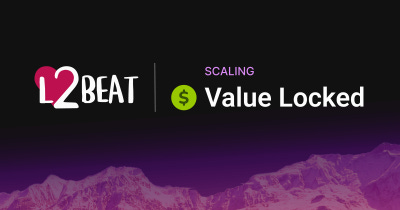Summary of "State Of The Bridges"
An Overview of Bridge Designs for Bitcoin L2s, a summary of the UTXO report by Guillame Girard
Table of Contents
Questioning the Necessity of Bridges
The Current State of Bitcoin Bridges
Understanding the Friction Between Solving Technical Challenges and Growing a Sustainable User Base
The Future State of Bitcoin Bridges (BitVM and Others)
The Thesis for Bitcoin Rollups and Bridge Innovation
Understanding Bitcoin Layer 1 and Layer 2 Innovations
Summary of Advanced Bitcoin Concepts
Summary of Bitcoin Rollups and Bridge Innovations
Questioning the Necessity of Bridges
Overview
The debate about scaling Bitcoin has been ongoing, particularly on whether the base layer should scale. The consensus is that Bitcoin will scale in layers. This section explores various mechanisms, particularly sidechains and bridges, and their roles in scaling Bitcoin.
Key Concepts
Sidechains: Independent blockchains that run parallel to Bitcoin, enabling more functionality without altering the main Bitcoin protocol.
Example: Liquid and RSK.
Bridges: Mechanisms that allow users to transfer BTC between the main chain and sidechains.
Example: Multisignature wallets used in bridge contracts.
Key Issues
Security Concerns: Bridges often rely on multisignature wallets, which can be vulnerable to collusion and theft.
Trust Issues: Users must trust that the majority within the multisig will cooperate to accept withdrawals.
Mnemonic Device
To remember the necessity of bridges:
Sidechains Bring Scalability But Trust Issues Remain (SBSBTIR).
The Current State of Bitcoin Bridges
Overview
This section discusses existing bridge designs and their limitations, focusing on why they haven't gained significant traction.
Key Concepts
Liquid: A federation of companies using a multisignature setup.
RSK: A merged-mined sidechain that uses Bitcoin miners for consensus.
Key Issues
Limited Adoption: Despite their innovative designs, these sidechains have not achieved widespread use.
Mnemonic Device
To remember the current state of Bitcoin bridges:
Limited Adoption Due to Security Concerns (LADSC).
Understanding the Friction Between Solving Technical Challenges and Growing a Sustainable User Base
Overview
This section delves into the challenges of balancing technical solutions with user adoption.
Key Concepts
Technical Challenges: Scaling, security, and decentralization.
User Adoption: Ensuring that solutions are user-friendly and secure to attract a broad user base.
Real-life Example
The Lightning Network, despite its technical robustness, took years to gain traction due to initial usability issues.
Mnemonic Device
To remember the friction between technical challenges and user adoption:
Technical Challenges Vs User Adoption (TCVUA).
The Future State of Bitcoin Bridges (BitVM and Others)
Overview
This section explores the potential of new technologies like BitVM to revolutionize Bitcoin bridges.
Key Concepts
BitVM: A mechanism that makes Bitcoin more programmable, potentially enabling more decentralized bridge designs.
Rollups: Layer 2 solutions that use the parent blockchain for data availability, aimed at scaling Bitcoin.
Key Issues
Trust Minimization: BitVM introduces a challenge mechanism to punish dishonest actors, making bridges more decentralized but not entirely trustless.
Mnemonic Device
To remember the future state of Bitcoin bridges: BitVM Revolutionizes Interoperability Decentralization Growth (BRIDG).
The Thesis for Bitcoin Rollups and Bridge Innovation
Overview
This section discusses the potential impact of rollups on Bitcoin, comparing it to their success on Ethereum.
Key Concepts
Rollups on Ethereum: Have accumulated significant assets and demonstrated strong market demand.
Potential for Bitcoin: Rollups could be even more impactful on Bitcoin, with an estimated market potential of $133 billion.
Real-life Example
Ethereum rollups like Arbitrum and Optimism have shown substantial growth, indicating a strong user demand for scalable solutions.
Mnemonic Device
To remember the thesis for Bitcoin rollups:
Rollups Offer Large Layer Utilization Potential (ROLLUP).
Conclusion
Bridges and rollups are crucial for scaling Bitcoin, offering various technical and usability challenges. Innovations like BitVM and rollups hold promise for more decentralized and scalable solutions, potentially transforming Bitcoin's ecosystem.
Source
For more detailed information, visit: State Of The Bridges: An Overview of Bridge Designs for Bitcoin L2s
Understanding Bitcoin Layer 1 and Layer 2 Innovations
In this summary, we will delve into the intricate world of Bitcoin's Layer 1 and Layer 2 solutions, focusing on various protocols, bridge designs, and go-to-market strategies. This information is crucial for anyone preparing for exams in blockchain technology or cryptocurrency studies.
Arch Network
Overview
The Arch Network introduces an innovative approach to state management on Bitcoin's Layer 1. It utilizes ordinals through a unique process called "state chaining." This method commits state changes in a single transaction, which reduces fees and ensures atomic execution.
Key Components
Arch zkVM: This is the zero-knowledge virtual machine of the Arch Network that enables secure and private computations.
Arch Decentralized Verifier Network: This network ensures the integrity and validity of the transactions and computations performed by the zkVM.
Benefits
Reduced Fees: By committing state changes in a single transaction, the network minimizes transaction costs.
L2BEAT
L2BEAT - The state of the layer two ecosystem
L2BEAT is an analytics and research website about Ethereum layer 2 scaling. Here you will find in depth comparison of major protocols live on Ethereum today.
Atomic Execution: Ensures that all parts of a transaction are executed simultaneously, reducing the risk of partial execution.
Self-Custody: Users can interact with decentralized applications without sacrificing control over their assets.
Real-Life Example
Imagine a decentralized application (dApp) for supply chain management. Using the Arch Network, the application can track the state of goods as they move through the supply chain, ensuring that each state change (e.g., from manufacturer to distributor) is recorded in a single, low-cost transaction.
QED Protocol
Overview
The QED Protocol addresses the fundamental scaling problem of blockchains by using a novel state model called zk-PARTH. This model enables massively parallel transaction proving and block generation.
Key Features
Massive Scalability: Able to handle millions of transactions per second.
Security: Guarantees security through mathematical proofs.
Real-Life Example
Consider a decentralized finance (DeFi) platform that needs to process thousands of transactions per second. The QED Protocol can handle this volume efficiently, ensuring that all transactions are secure and validated.
RGB++ Protocol
Overview
The RGB++ Protocol provides native Turing-complete capability on Bitcoin Layer 1 without relying on new OP codes or requiring hard forks. It attaches additional data as extra program logic to the original Bitcoin UTXO.
Key Features
No New OP Codes: Works directly on Layer 1 without the need for protocol changes.
Off-Chain Data Cells: Links on-chain UTXOs with off-chain data and execution logic.
Real-Life Example
Imagine a smart contract for a decentralized voting system. Using RGB++, each vote can be recorded as a transfer of a UTXO, with the off-chain data cell storing the voter's choice. This ensures a transparent and tamper-proof voting process.
Bitcoin Bridges
Types of Bridges
Traditional Bridges: Basic bridge designs for transferring assets between blockchains.
Reinforced Bridges: Add an extra layer of security to mitigate centralization risks.
Optimized Bridges: Distribute trust among participants of the multisig.
Trust-Minimized Bridges: Aim for near trustless assumptions, allowing broader participation in the protocol.
Real-Life Example
Consider a scenario where you want to transfer Bitcoin to an Ethereum-based DeFi platform. A reinforced bridge can ensure that the transfer is secure, minimizing the risk of centralization by involving Bitcoin miners in the validation process.
Go-to-Market Strategies for Bitcoin L2s
Technological Approach
Focuses on solving technical challenges with complex zero-knowledge proofs and BitVM optimizations. This approach aims for a truly decentralized Layer 2 solution.
Community Moat Approach
Focuses on the fastest go-to-market strategy by making calculated trade-offs. This approach aims to gain a solid user base quickly, even if it means sacrificing decentralization in the medium term.
Real-Life Example
A company might choose the Community Moat approach by offering incentives like points or tokens to attract users quickly. Once a user base is established, the company can then work on decentralizing the system.
Sidechains vs. Rollups
Spectrum of Solutions
Bitcoin Layer 2 solutions exist on a spectrum, with sidechains on one end and rollups on the other. Each has its own set of trade-offs between decentralization, scalability, and user experience.
Real-Life Example
A sidechain might offer faster transaction times and lower fees but at the cost of some centralization. A rollup, on the other hand, might prioritize decentralization and security, even if it means higher costs and slower transactions.
Incentive Programs
Points System (BOB)
The BOB point system rewards users based on their on-chain activity, encouraging engagement and participation.
Ecosystem First (Botanix)
Botanix focuses on supporting ecosystem projects from day one, ensuring that applications built on top of Botanix have a real user base.
Research-First (Bitlayer)
Bitlayer emphasizes research and development, contributing to the collective understanding of blockchain technology and continuously improving their designs.
Real-Life Example
A user participating in the BOB point system might earn points for every transaction they make on the BOB mainnet. These points can then be redeemed for rewards or used within the ecosystem, incentivizing continued participation.
Conclusion
Understanding these concepts is crucial for anyone studying blockchain technology and cryptocurrency. By grasping the intricacies of protocols like Arch, QED, and RGB++, as well as the various bridge designs and go-to-market strategies, you will be well-prepared for your exams and future endeavors in this exciting field. For more detailed information, visit the source: [https://docs.gobob.xyz/docs/learn/bob-stack/roadmap](https://docs.gobob.xyz/docs/learn/bob-stack/roadmap) --- By breaking down these complex topics into more digestible sections, you can better understand and retain the information needed for your exams. Good luck!
Summary of Advanced Bitcoin Concepts
Bitcoin Bridges and BitVM
Overview of BitVM
BitVM is a decentralized bridge design for Bitcoin rollups, aimed at enhancing scalability and security. It is not a single solution but a collection of methods and protocols that various teams are working on, based on an initial proposal by Robin Linus.
Key Parameters in BitVM Variations
Trust Assumptions
Decentralization: The level of decentralization determines who can challenge the state of the rollup. The best scenario allows anyone to challenge, while the worst restricts it to a majority of actors in a multisig.
Example: A highly decentralized bridge allows any user to exit the rollup trustlessly, enhancing security.
Challenger Response
Time and Resources: The time and resources needed to resolve a challenge can vary. The best case involves a single interaction within hours, while the worst may take months with multiple interactions.
Example: Faster challenge responses improve user experience and security, as seen in systems that resolve disputes within hours.
Capital Efficiency
Capital Requirements: The amount of BTC that operators need to lock up affects the rollup's efficiency. Lower capital requirements are preferable.
Example: A rollup requiring a low BTC multiple is more efficient and competitive compared to systems like Lightning.
Data Availability (DA)
Data availability is crucial for verifying transactions and ensuring the integrity of the blockchain. There are two main methods:
On-chain DA: Posting transaction data directly to Bitcoin, ensuring security but increasing costs.
Off-chain DA: Storing data off-chain, reducing costs but introducing risks like data censorship.
The DA Dilemma
Choosing between on-chain and off-chain DA involves trade-offs between security and user experience. Bitcoin purists prefer on-chain DA for its security, but off-chain DA can offer better scalability and lower costs.
Rollup Variants
Optimium: An optimistic rollup storing data on-chain, ensuring high security but at higher costs.
Validium: An optimistic rollup storing data off-chain, offering scalability but requiring trust in data providers.
Investment Opportunities
Exploring new DA layers with strong Bitcoin relationships, like CHAR by Jeremy Rubin, can enhance security and scalability. CHAR uses attestation chains and L1 bonds to improve BitVM's security.
Challenges with Bitcoin as a DA Layer
Blockspace Scarcity: Limited blockspace can centralize rollup operations, as operators may rely on pools for optimized transaction flow.
Fee Rate Dynamics: Constant demand for blockspace, regardless of fee rates, can lead to higher fees due to the fixed rate of rollup proofs submission.
Future Directions
Innovations like Citrea's volition model, which balances on-chain security with off-chain cost efficiency, offer flexible data storage options based on application needs. This model can cater to diverse use cases, from gaming to stablecoins, while maintaining Bitcoin interoperability.
Mnemonic Devices
To remember these concepts, use the following mnemonic: "Trust Challenges Capital Data Rollup Investments Challenges Future" (TCCDRICF)
Trust Assumptions
Challenger Response
Capital Efficiency
Data Availability
Rollup Variants
Investment Opportunities
Challenges with Bitcoin as DA
Future Directions
This mnemonic covers the critical aspects of Bitcoin bridges and rollups, helping you recall the main points during exams.
Summary of Bitcoin Rollups and Bridge Innovations
Governance Discussions and Bitcoin Rollups
Bitcoin rollups present a novel approach to scaling the Bitcoin network and introducing new functionalities. However, governance around rollups is complex and often contentious. One key issue is whether to activate certain opcodes like OP_CAT, which could facilitate rollups but also bring inefficiencies and security concerns. This presents a classic chicken-and-egg problem: should the demand for rollups be proven before activating an opcode, or should the opcode be activated first to stimulate demand?
Real-Life Example:
Imagine a city considering building a new highway to reduce traffic congestion. Should the city wait until the traffic becomes unbearable to justify the expense, or should it build the highway now in anticipation of future traffic growth? Similarly, Bitcoin developers must decide whether to enable certain functionalities now or wait for more evident demand.
Covenant Proposals for Scaling
In addition to rollups, other proposals like LNHANCE, CTV (CheckTemplateVerify), and TX_HASH could help scale Bitcoin. These proposals aim to improve Bitcoin's transaction efficiency and scalability without relying solely on rollups.
Mnemonic Device:
Think of LNHANCE, CTV, and TX_HASH as "scaling tools" in Bitcoin's toolbox. Just as a mechanic uses different tools for different tasks, Bitcoin can use various proposals to address specific scaling challenges.
Sidechains vs. Rollups
Sidechains
Sidechains are separate blockchains that are pegged to Bitcoin, allowing for more functionalities like EVM (Ethereum Virtual Machine) compatibility. This can attract DeFi (Decentralized Finance) activities back to Bitcoin, which currently has over $9.3 billion locked in WBTC (Wrapped Bitcoin). However, sidechains are often criticized for being more centralized.
Rollups
Rollups, including innovations like BitVM, aim to scale Bitcoin while maintaining decentralization and trust minimization. Rollups leverage zero-knowledge proofs to enhance scalability and privacy.
Key Differences:
Sidechains: More centralized, but offer greater functionality and EVM compatibility.
Rollups: More decentralized, focus on scalability and privacy.
Real-Life Example:
Think of sidechains as private toll roads that offer faster travel but at a cost and with centralized control. Rollups are like public highways that aim to be accessible to everyone while maintaining public oversight and security.
Low Fee Rate Bias
Bitcoin's current low transaction fees are seen as artificially low due to slow adoption and off-chain exchanges. This "low fee rate bias" may disappear as Bitcoin adoption grows, leading to higher fees and a greater need for scalable solutions like sidechains and rollups.
Mnemonic Device
Remember "LFR Bias" (Low Fee Rate Bias) as a temporary calm before the storm. Just as calm seas can suddenly become turbulent, Bitcoin's low fees could rapidly increase, creating a rush for scalable solutions.
The Bridge Race
The competition between sidechains and rollups is intensifying, with both aiming to capture the capital within Bitcoin wallets and altcoin protocols. Innovations like BitVM2 and proposed opcode changes are expected to play significant roles in this race.
Real-Life Example
Think of this as a marathon where different runners (sidechains and rollups) are competing to reach the finish line first. The winner will capture the most capital and user adoption.
Conclusion
The landscape of Bitcoin's Layer 2 solutions is evolving rapidly, with sidechains and rollups each offering unique advantages and facing distinct challenges. Governance, scalability, and economic incentives are at the forefront of these discussions. As Bitcoin continues its journey towards hyperbitcoinization, understanding these concepts will be crucial for anyone involved in the ecosystem.
Final Mnemonic Device:
Remember the "3 S's": Scalability, Security, and Sidechains. These are the key elements driving the future of Bitcoin's Layer 2 solutions. By staying informed and understanding these concepts, you'll be well-prepared for any exams or discussions on Bitcoin's evolving technology landscape.
Further Reading
ROLLUPS - The Ultimate Ethereum Scaling Strategy? Arbitrum & Optimism Explained






